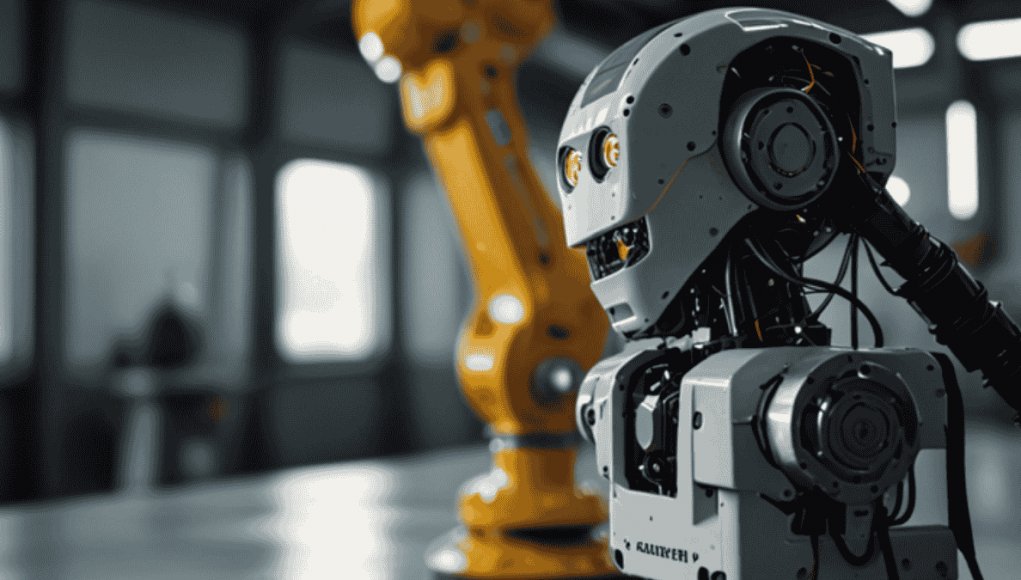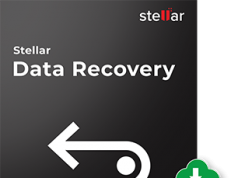AI-powered tools for robot control are reshaping the field of robotics by offering advanced automation and control capabilities. These tools utilize artificial intelligence (AI) to enable robots to operate more efficiently, make smarter decisions, and perform complex tasks with greater accuracy. The combination of AI and robotics is allowing industries to push the boundaries of what robots can achieve.
AI in robot control includes the use of algorithms that allow machines to learn, adapt, and improve based on data. From improving movement precision to enhancing decision-making, AI-powered tools are making robots more autonomous and capable. For students and beginners interested in robotics, these tools open up new possibilities for developing cutting-edge solutions.
Key Benefits of AI-Powered Tools for Robot Control
When selecting AI-powered tools for robot control, it is essential to understand the numerous benefits they offer.
1. Increased Precision
Firstly, these tools increase precision, allowing robots to execute tasks with minimal errors. Whether it’s assembling delicate components in a factory or assisting in complex surgeries, AI ensures more accurate outcomes. Furthermore, they optimize efficiency by enabling robots to process and respond to information in real-time, making faster and more informed decisions.
2. Adaptability
Another key advantage is their adaptability. AI allows robots to adjust their behavior based on changing environments or data, making them more versatile across different industries.
3. Greater Autonomy
In addition to this, AI-powered tools significantly reduce human intervention, allowing for greater autonomy in robot operation, which saves time and reduces costs.
4. Scalability
Lastly, these tools are scalable, making it easier for students and professionals alike to experiment and expand their projects without requiring extensive resources.
15 AI-Powered Tools for Robot Control
There are many AI-Powered Tools for Robot Control available today, offering a wide range of functionalities to help users achieve better control over robotic systems. Below is a curated list of 15 such tools.
1. TensorFlow
TensorFlow is a robust open-source AI platform widely used for building machine learning models. It offers developers a powerful toolset for robotics, enabling systems to learn from data, make decisions, and react to their environment in real time. TensorFlow supports deep learning models essential for tasks like object detection, path planning, and sensor fusion. It also integrates seamlessly with other AI frameworks, making it adaptable for both small and large-scale robotics projects. For those building autonomous robots, TensorFlow’s flexibility in model training is crucial.
Features:
- Comprehensive AI library for various tasks
- Deep learning model support
- Scalable from small to large projects
- TensorFlow Lite for edge AI applications
- Pre-built models for vision tasks
- Reinforcement learning support
- Integrates with Robot Operating System (ROS)
Pros:
- Strong community support
- Highly scalable and flexible
- Works well with other AI tools
Cons:
- Steep learning curve, especially for beginners
2. Keras
Keras is a high-level neural network library built on top of TensorFlow, simplifying the process of developing deep learning models. It is known for its user-friendly interface, allowing quick prototyping of AI models for robotic applications. Beginners and experts alike can use Keras to build AI systems that control robots in tasks such as object recognition and autonomous navigation. It’s particularly useful when speed and ease of use are essential, making it perfect for smaller, fast-paced projects.
Features:
- Easy-to-use API for neural networks
- Multi-backend support (works with TensorFlow, Theano)
- Modular and flexible model design
- Built-in support for deep learning tasks
- Quick prototyping for robotic systems
- Large community and abundant resources
- Simplifies hyperparameter tuning
Pros:
- Extremely user-friendly and fast to implement
- Flexible integration with other AI tools like TensorFlow
- Great for fast prototyping of models
Cons:
- Limited to high-level functionalities
3. AutoRT
AutoRT, by Google DeepMind, is an advanced AI system that enhances robotic learning through large foundational models like LLMs (Large Language Models). It collects real-world experiential data, helping robots scale their learning capabilities. AutoRT excels in directing multiple robots to perform various tasks, leveraging AI models to generate, evaluate, and execute complex tasks. This tool’s ability to orchestrate robots in dynamic environments makes it invaluable for real-world robotic applications.
Features:
- Uses LLM and VLM to understand tasks
- Simultaneous multi-robot orchestration
- Gathers large datasets from real-world interactions
- Task generation and execution based on real-time data
- Includes safety protocols inspired by Asimov’s laws
- Real-time task optimization
- Scalable for large robotic operations
Pros:
- Scalable across various environments
- Innovative task-generation model
- Focuses on safety and layered protocols
Cons:
- Requires significant computational resources
- Complex system setup for larger projects
4. SARA-RT
SARA-RT is a solution designed to enhance the speed and efficiency of Robotics Transformers. It significantly reduces the computational complexity associated with decision-making processes in robots. SARA-RT speeds up real-time robotic tasks, such as manipulation and navigation, using a method called “up-training,” which boosts the performance of transformer models.
Features:
- Efficient model fine-tuning
- Reduces computational resource demands
- Increases decision-making speed
- Improves real-time performance
- Applicable to a wide range of transformer models
- Enhances processing of spatial data from robot cameras
- Supports multi-tasking robots
Pros:
- Increases processing speed without compromising quality
- Versatile across various AI applications
- Reduces lag in sensor-heavy tasks
Cons:
- Requires advanced implementation knowledge
- Can be resource-intensive for small-scale applications
5. MATLAB Robotics System Toolbox
MATLAB’s Robotics System Toolbox offers a rich set of tools for designing, simulating, and testing robotic systems. It is widely used in research and development, providing extensive support for robot perception, control, and path planning. With real-time sensor processing and integration with ROS, it is perfect for simulating complex robotic operations before actual deployment.
Features:
- Built-in algorithms for robotic control
- Real-time sensor processing
- Integration with ROS
- Autonomous navigation tools
- Supports robotic arms and hardware control
- Simulation tools for testing before deployment
- Rich visualization for data and control
Pros:
- Great for prototyping and academic use
- Supports real-time sensor feedback
- Excellent visualization tools
Cons:
- Requires a MATLAB license
- Steep learning curve for non-experts
6. V7 Labs
V7 Labs specializes in computer vision, a crucial component for robots that rely on image recognition for decision-making. The platform provides an AI-powered solution for tasks like object detection, quality inspection, and navigation. V7 Labs is perfect for roboticists who need a reliable computer vision tool for real-time processing.
Features:
- Advanced image annotation tools
- Supports large datasets for training models
- AI-powered object detection
- Real-time processing for vision tasks
- Active learning for continuous model improvement
- Integration with robotic systems
- Tools for quality inspection and navigation
Pros:
- Focuses on real-time applications
- Seamless integration with other robotic platforms
- Great for vision-heavy tasks
Cons:
- Limited to vision-based applications
7. ABB Robotics
ABB Robotics is a leader in industrial automation, offering AI-integrated robots for precise, high-speed operations across various industries. Known for reliability, ABB robots can handle complex tasks with accuracy, supported by AI to adapt to dynamic environments. Its solutions range from simple robotic arms to fully autonomous systems.
Features:
- AI-enhanced control systems
- Collaborative robots for human-robot interaction
- High-speed and precision operations
- Comprehensive documentation and user support
- Scalable for different industries
- User-friendly programming interfaces
- Wide range of industrial robots
Pros:
- Reliable and versatile for industrial tasks
- Scalable solutions for various industries
- Proven accuracy and speed
Cons:
- High cost, especially for smaller businesses
8. Boston Dynamics Spot
Spot by Boston Dynamics is a four-legged robot known for its versatility in navigating complex terrains autonomously. Spot is often used for industrial inspection, exploration, and mapping tasks, making it a valuable tool in areas that are hard to reach. It is also customizable, allowing users to add sensors and tools for specialized missions.
Features:
- Autonomous navigation across various terrains
- Customizable with additional tools and sensors
- Real-time obstacle detection
- AI-driven decision-making
- Durable for industrial-grade use
- Multi-terrain adaptability
- Safety features for complex environments
Pros:
- Highly adaptable and versatile
- Customizable for specific tasks
- Great for exploration and industrial inspections
Cons:
- Expensive for small-scale applications
- Requires advanced configuration for custom uses
9. Google DeepMind RT-2
RT-2 is Google DeepMind’s robotic control system designed for complex decision-making. It uses transformer models to process tasks in real-time, focusing on image and text-based commands. RT-2 enhances the performance of robots by optimizing their ability to generalize across tasks, making it a go-to for developers working on autonomous robots.
Features:
- Transformer-based decision-making
- Supports image and text commands
- Optimized for multi-task robotic systems
- Real-time processing for task execution
- Scalable for various robotic environments
- Supports complex manipulation tasks
- Enhanced speed for processing large datasets
Pros:
- Improves decision-making speed
- Highly scalable across tasks
- Accurate real-time processing
Cons:
- Requires heavy computational resources
- Complex to implement
10. RoboDK
RoboDK is a powerful simulation and offline programming tool that allows users to create programs for robots without the need for advanced coding skills. It enables users to simulate robot tasks and generate code for various robots from different manufacturers. This makes it a valuable tool for industrial automation, where testing and optimizing robot programs before deployment is essential. RoboDK helps reduce errors and downtime, as programs can be perfected in a virtual environment.
Features:
- Supports a wide variety of robot brands
- 3D simulation for accurate testing
- Offline programming for error reduction
- Drag-and-drop interface for ease of use
- Multi-robot programming support
- Integration with CAD software
- Comprehensive task library (welding, painting, etc.)
Pros:
- User-friendly interface, ideal for beginners
- Reduces errors through simulation
- Versatile robot brand support
Cons:
- Full feature access requires a paid license
11. UiPath Robotics
UiPath Robotics focuses on robotic process automation (RPA), enabling users to automate repetitive, rule-based tasks. It integrates AI capabilities like natural language processing to create bots that can handle complex workflows. UiPath is popular in industries such as logistics, manufacturing, and customer service, where automation can significantly boost efficiency. With its visual interface, users can easily control bots without coding expertise.
Features:
- AI-driven process automation
- Natural language processing integration
- Visual drag-and-drop interface
- Task and process mining
- Seamless integration with legacy systems
- Real-time task scheduling
- Scalable enterprise solutions
Pros:
- Easy for beginners with no programming skills
- Boosts workflow efficiency
- Scalable for enterprise-level operations
Cons:
- Limited customization for complex robotic tasks
12. OpenAI Gym
OpenAI Gym is a toolkit for developing and testing reinforcement learning algorithms in robotic simulations. It allows robots to learn tasks through trial and error, such as walking, grasping, or solving puzzles. OpenAI Gym is highly beneficial for robotics engineers looking to experiment with machine learning models in a controlled environment. Its integration with various robotics simulators makes it ideal for real-world applications.
Features:
- Reinforcement learning environment
- Supports multiple simulation tools
- Easy-to-use interface for experimenting
- Integration with various robotics systems
- Real-time testing for machine learning models
- Open-source platform with a large community
- Extensive documentation and tutorials
Pros:
- Ideal for learning and experimentation
- Supported by a large community
- Great for reinforcement learning projects
Cons:
- Limited to simulation, not real-world deployments
13. MoveIt
MoveIt is an open-source motion planning framework designed for complex robotic tasks. It supports a wide range of robotic functions like trajectory optimization, collision detection, and real-time path planning. MoveIt is compatible with ROS (Robot Operating System) and is commonly used for robotic arms, making it highly versatile for tasks such as pick-and-place and autonomous navigation.
Features:
- Real-time motion planning
- Advanced collision detection system
- Compatible with robotic arms and manipulators
- Seamless integration with ROS
- 3D visualization tools for trajectory planning
- Multi-robot coordination support
- Real-time task optimization and execution
Pros:
- Open-source and highly customizable
- Excellent for complex robotic tasks
- Great integration with ROS for advanced robotics projects
Cons:
- Requires advanced programming knowledge
14. ROS (Robot Operating System)
ROS is an open-source middleware that provides tools and libraries to help software developers create complex robotic applications. It is one of the most widely used frameworks in the robotics industry and supports a wide range of sensors and actuators. ROS allows for real-time sensor processing, communication between different robotic systems, and supports a wide range of robotic hardware.
Features:
- Modular architecture for scalability
- Real-time data processing
- Multi-robot communication support
- Comprehensive sensor and hardware support
- Seamless integration with multiple simulators
- Extensive libraries for task-specific functions
- Strong community support and open-source development
Pros:
- Free and open-source
- Widely supported by developers
- Highly adaptable for different robotic applications
Cons:
- Can be difficult to set up for beginners
- Requires advanced understanding of robotics
15. NVIDIA Isaac SDK
NVIDIA Isaac SDK is a development platform specifically designed for creating and simulating AI-powered robots. It leverages NVIDIA’s powerful GPU architecture to perform advanced tasks such as 3D simulation, AI model deployment, and real-time processing. Isaac SDK is particularly valuable for developers working on autonomous robots or drones that require high levels of computing power for tasks like navigation and obstacle avoidance.
Features:
- AI-powered robotic development platform
- High-performance 3D simulation
- Supports deep learning model deployment
- Optimized for NVIDIA GPUs
- Pre-trained models for various tasks (e.g., navigation)
- Seamless integration with ROS
- Multi-robot simulation in real-time
Pros:
- Advanced simulation capabilities
- Powerful GPU optimization for AI tasks
- Supports deep learning and real-time decision-making
Cons:
- Requires high-end hardware for optimal performance
- Steeper learning curve for beginners
Conclusion
AI-powered tools for robot control are driving innovation in robotics by making machines more intelligent, precise, and efficient. As these tools continue to evolve, they are becoming increasingly accessible for everyone, paving the way for a future where robots can play a larger role in everyday life.





